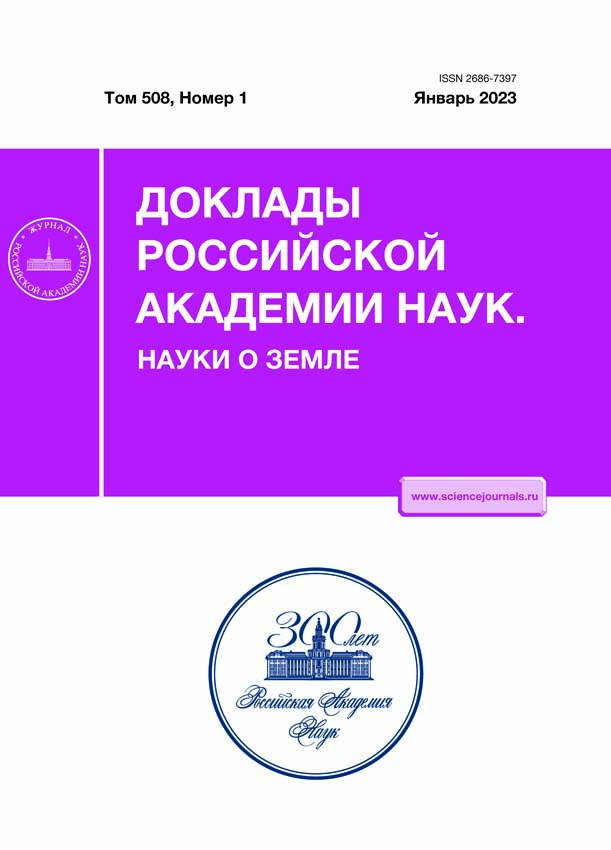MULTI-YEAR SUCCESSION OF BIOFOULING COMMUNITIES ON UNDERWATER ARTIFICIAL STRUCTURES IN THE APHOTIC ZONE OF THE SEA OF OKHOTSK
- Authors: Chava A.I.1, Mokievsky V.M.1
-
Affiliations:
- Shirshov Institute of Oceanology of Russian Academy of Sciences
- Issue: Vol 508, No 1 (2023)
- Pages: 127-131
- Section: ОКЕАНОЛОГИЯ
- URL: https://journals.rcsi.science/2686-7397/article/view/135722
- DOI: https://doi.org/10.31857/S2686739722601946
- EDN: https://elibrary.ru/GIQIOJ
- ID: 135722
Cite item
Abstract
А 10-year succession of the fouling community inhabiting underwater manmade structures at a depth of 80–90 m was described using the materials from regular video surveys of the technical installations on the southwestern shelf of the Sea of Okhotsk. A general scheme of macrofouling community developmental stages in steps of 1–2 years has been compiled both for the intact community and for sites subjected to the single or multiple hydrodynamic cleaning. For each stage we visually estimated the projective cover of macrofouling and identified the characteristic dominant species down to the smallest possible taxon. The first two years of the intact community are characterized by low projective cover (up to 50%), in the third year and further there is a sharp increase in the abundance and diversity of macrofouling organisms. Barnacles Chirona evermanni, sponges Phakellia sp., bryozoans Securiflustra securifrons, and ascidians Boltenia ovifera were noted among the dominant species in the community older than two years. The early stages of restorative succession differ from the intact succession in terms of dominant species and developmental rates.
Keywords
About the authors
A. I. Chava
Shirshov Institute of Oceanology of Russian Academy of Sciences
Author for correspondence.
Email: cribrilina@gmail.com
Russian, Moscow
V. M. Mokievsky
Shirshov Institute of Oceanology of Russian Academy of Sciences
Email: cribrilina@gmail.com
Russian, Moscow
References
- Wahl M. Marine epibiosis. I. Fouling and antifouling: some basic aspects // Marine ecology progress series. 1989. V. 58. P. 175–189.
- Ошурков В.В. Сукцессии и динамика эпибентосных сообществ верхней сублиторали бореальных вод. Владивосток.: Дальнаука; 1998.
- Clare A.S., Rittschof D., Gerhart D.J., et al. Molecular approaches to nontoxic antifouling // Invertebrate Reproduction & Development. 1992. V. 22. P. 67–76.
- Apolinario M., Coutinho R. Understanding the biofouling of offshore and deep-sea structures / In: Advances in marine antifouling coatings and technologies. Woodhead Publishing; 2009. P. 132–147.
- Bellou N., Papathanassiou E., Dobretsov S., et al. The effect of substratum type, orientation and depth on the development of bacterial deep-sea biofilm communities grown on artificial substrata deployed in the Eastern Mediterranean // Biofouling. 2012. V. 28. No 2. P. 199–213.
- Zhang H., Cao W., Wu Z., et al. Biofouling on deep-sea submersible buoy systems off Xisha and Dongsha Islands in the northern South China Sea // International Biodeterioration & Biodegradation. 2015. V. 104. P. 92–96.
- Terry L.A., Picken G.B. Algal fouling in the North Sea / In: Evans L.V., Hoaglan K.D., editors. Studies in Environmental Science. Vol. 28. Amsterdam: Elsevier; 1986. P. 179–192.
- Irving A.D., Connell S.D. Sedimentation and light penetration interact to maintain heterogeneity of subtidal habitats: algal versus invertebrate dominated assemblages // Marine Ecology Progress Series. 2002. V. 245. P. 83–91.
- Cowie P. R. Biofouling patterns with depth / In: Durr S., Thomason J.C., editors. Biofouling., Oxford: Blackwell Publishing. 2010. P. 87–99.
- Gaines S.D., Gaylor D.B., Gerber L.R., et al. Connecting places: the ecological consequences of dispersal in the sea // Oceanography. 2007. V. 20. No 3. P. 90–99.
- Звягинцев А.Ю. Обрастание судов прибрежного и портового плавания в районе острова Сахалин / В кн.: Бентос и условия его существования на шельфовых зонах Сахалина. Владивосток: ДВНЦ АН СССР; 1985. С. 102–116.
- Михайлов С.Р., Блинов С.В. Обрастание судов промыслового флота в Дальневосточном морском бассейне / В кн.: Организмы обрастания дальневосточных морей. Владивосток: ДВНЦ АН СССР; 1981. С. 28–41.
- Звягинцев А.Ю. Исследование обрастания системы охлаждения Владивостокской ТЭЦ-2 / В кн.: Современные проблемы биологических повреждений материалов: сб. Материалов VI Всероссийской Научно-практической конференции. Пенза: Приволжский дом знаний; 2002. С. 69–71.
- Зевина Г.Б., Горин А.Н. Флюктуация усоногих раков в обрастаниях буев залива Петра Великого / В кн.: Обрастания в Японском и Охотском морях. Владивосток: ДВНЦ АН СССР; 1975. С. 71–78.
- Звягинцев А.Ю. Морское обрастание в северо-западной части Тихого океана. Владивосток: Дальнаука; 2005.
- Andersson M.H., Berggren M., Wilhelmsson D., et al. Epibenthic colonization of concrete and steel pilings in a cold-temperate embayment: a field experiment // Helgoland Marine Research. 2009. V. 63. No 3. P. 249–260.










